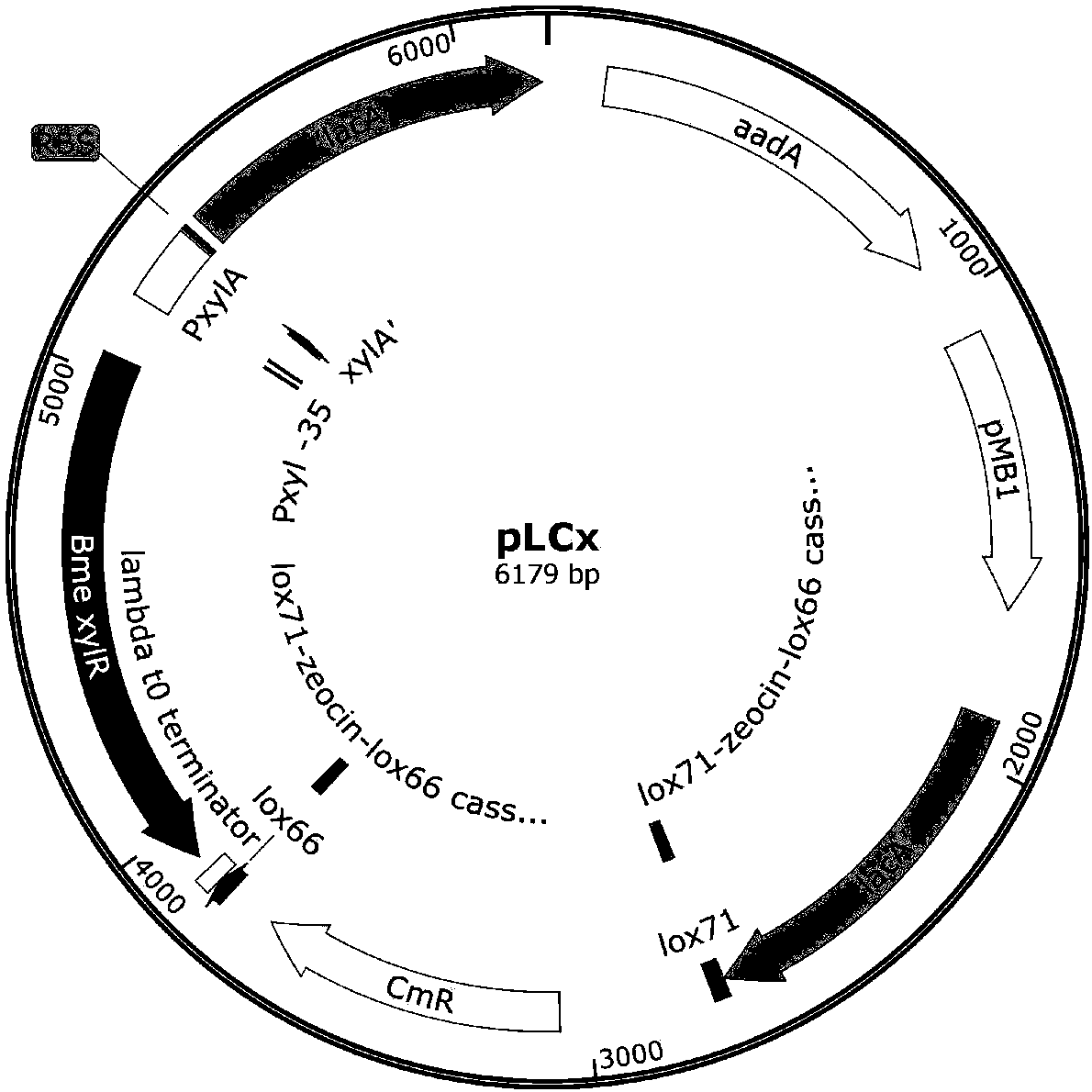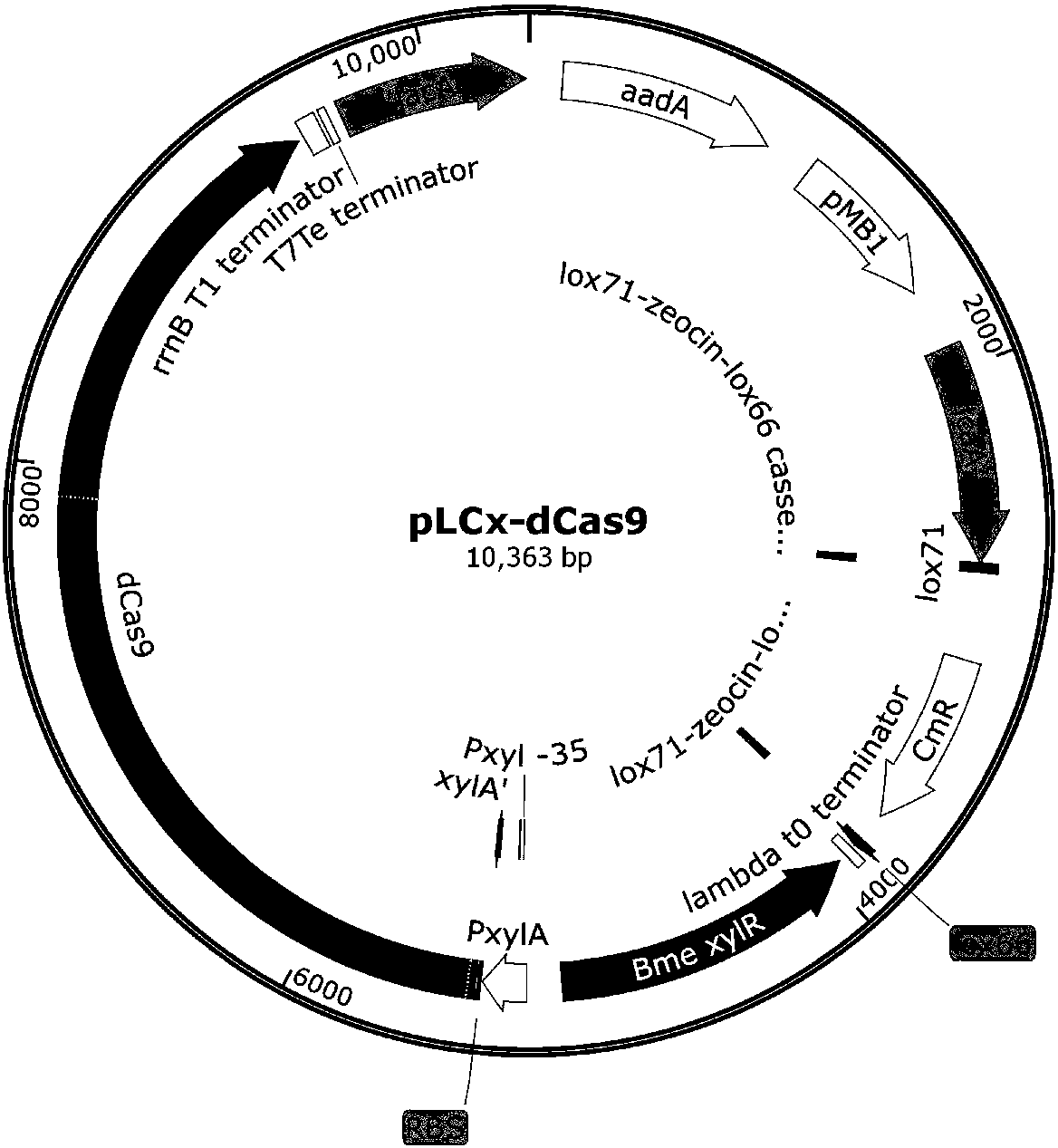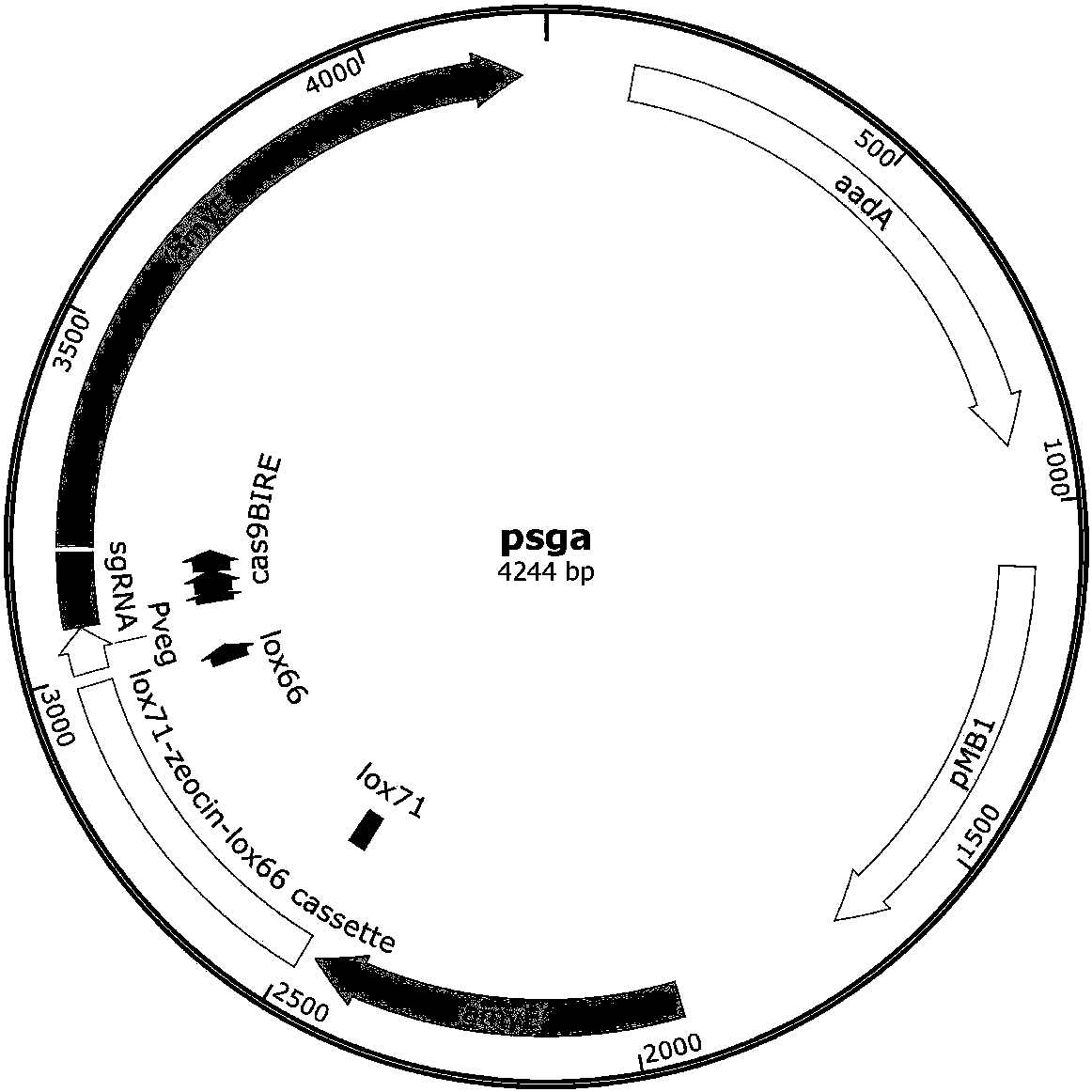Method for producing N-acetylglucosamine by jointly using glucose and xylose based on CRISPRi
A technology of glucose and acetamido, applied in the field of genetic engineering, can solve the problems of glucose metabolism regulation, waste and the like, and achieve the effects of extracellular improvement, efficient co-utilization, and yield improvement
- Summary
- Abstract
- Description
- Claims
- Application Information
AI Technical Summary
Problems solved by technology
Method used
Image
Examples
Embodiment 1
[0044] Embodiment 1: Construction of CRISPRi system
[0045] The CRISPRi system constructed in the present invention consists of two integration vectors, namely pLCx-dCas9 (shown in SEQ ID NO.5) and psga (shown in SEQ ID NO.8). Among them, pLCx-dCas9 is used to integrate the dCas9 protein induced by xylose into the lacA site of the Bacillus subtilis genome, and psga can integrate sgRNA expression into the amyE site of the Bacillus subtilis genome.
[0046] In the construction process of pLCx-dCas9, an integrated expression vector pLCx that can be used in Bacillus subtilis was firstly constructed, which was constructed by one-step cloning of five fragments F1, F2, F3, F4 and F5, F1- The sequence of F5 is shown in SEQ ID NO.9-SEQ ID NO.13. Among them, F1 contains the spectinomycin resistance gene aadA and the E. coli replicon pMB1, F2 is the 800-base fragment of the 5' end of the Bacillus subtilis lacA gene, F3 is the chloramphenicol resistance fragment containing lox71 and lox...
Embodiment 2
[0048] Example 2: Using the CRISPRi system to regulate the expression of zwf, pfkA and glmM
[0049] Primers were designed according to the sequences of the three genes zwf, pfkA and glmM, and the vector psga was used as a template for reverse PCR to obtain three vectors psga-zwf, psga- pfkA and psga-glmM. The primers used by psga-zwf are sg-F:GTTTTAGGCTAGAAATAGCAAGTTAAAATAAG and sg-zwf-R:
[0050] TTTCTAGCTCTAAAACTGGTCTAATGAGGATCTTCGACATTTATTGTACAACACGAGCC,psga-pfkA所用引物为sg-F:GTTTTAGAGCTAGAAATAGCAAGTTAAAATAAG与sg-pfkA-R:TCTAGCTCTAAAACCGGGAATGAACGCAGCAGTTACATTTATTGTACAACACGAGCC,psga-glmM所用引物为sg-F:GTTTTAGAGCTAGAAATAGCAAGTTAAAATAAG与sg-glmM-R:
[0051] TTTCTAGCTCTAAAACATAGTGAGCTTACACCTGAGACATTTATTGTACAACACGAGCC.
[0052] The vectors psga-zwf, psga-pfkA and psga-glmM were used as templates respectively, and the three sgRNAs were assembled into the linearized psga vector by the method of Golden Gate, and the vector psga-zpg (Golden Gate For the assembly method, please refer to the...
Embodiment 3
[0054] Example 3: Fermentation of recombinant Bacillus subtilis BSGNX-dCas9-zpg to produce acetylglucosamine
[0055] Using the recombinant bacillus constructed in Example 2 to carry out shake flask fermentation, with Bacillus subtilis BSGNY-P veg -glmS -P 43 -GNA1 was grown and fermented under the same conditions as a control. The seeds cultivated at 37°C and 220rpm for 12h were transferred to the fermentation medium with a 5% inoculation amount, and xylose with a final concentration of 15g / L was added 6h after inoculation, and cultivated at 37°C and 220rpm for 48h. The content of acetylglucosamine in the final fermentation supernatant reached 20.5g / L, which was higher than that of the starting strain (BSGNY-P veg -glmS -P 43 -GNA1) increased by 32.2%; simultaneously the yield of recombinant Bacillus subtilis fermented acetylglucosamine provided by the present invention was 0.612g / g glucose, which was 96.8% higher than that of the starting strain (results are shown in Tabl...
PUM
 Login to View More
Login to View More Abstract
Description
Claims
Application Information
 Login to View More
Login to View More - R&D
- Intellectual Property
- Life Sciences
- Materials
- Tech Scout
- Unparalleled Data Quality
- Higher Quality Content
- 60% Fewer Hallucinations
Browse by: Latest US Patents, China's latest patents, Technical Efficacy Thesaurus, Application Domain, Technology Topic, Popular Technical Reports.
© 2025 PatSnap. All rights reserved.Legal|Privacy policy|Modern Slavery Act Transparency Statement|Sitemap|About US| Contact US: help@patsnap.com



